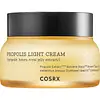What's inside
What's inside
 Key Ingredients
Key Ingredients

 Benefits
Benefits

 Concerns
Concerns

 Ingredients Side-by-side
Ingredients Side-by-side

Centella Asiatica Extract 60%
CleansingWater
Skin ConditioningButylene Glycol
HumectantPropanediol
SolventNiacinamide
SmoothingIsotridecyl Isononanoate
EmollientPhenyl Trimethicone
Skin Conditioning1,2-Hexanediol
Skin ConditioningTranexamic Acid
AstringentDiglycerin
HumectantSqualane
EmollientButyrospermum Parkii Butter
Skin ConditioningPolyglyceryl-3 Distearate
EmulsifyingXylitylglucoside
HumectantCetyl Alcohol
EmollientAcrylates/C10-30 Alkyl Acrylate Crosspolymer
Emulsion StabilisingAnhydroxylitol
HumectantPolyacrylate Crosspolymer-6
Emulsion StabilisingArginine
MaskingTrehalose
HumectantZea Mays Starch
AbsorbentXylitol
HumectantPanthenol
Skin ConditioningPentylene Glycol
Skin ConditioningMicrocrystalline Cellulose
AbsorbentMannitol
HumectantGlyceryl Stearate Citrate
EmollientEthylhexylglycerin
Skin ConditioningHydroxyethyl Urea
HumectantGlycerin
HumectantGlucose
HumectantMadecassoside
AntioxidantSodium Hyaluronate
HumectantBisabolol
MaskingHydrogenated Lecithin
EmulsifyingGlyceryl Acrylate/Acrylic Acid Copolymer
HumectantPyrus Communis Flower Extract
Skin ConditioningLactobacillus Ferment
Skin ConditioningCentella Asiatica Extract 60%, Water, Butylene Glycol, Propanediol, Niacinamide, Isotridecyl Isononanoate, Phenyl Trimethicone, 1,2-Hexanediol, Tranexamic Acid, Diglycerin, Squalane, Butyrospermum Parkii Butter, Polyglyceryl-3 Distearate, Xylitylglucoside, Cetyl Alcohol, Acrylates/C10-30 Alkyl Acrylate Crosspolymer, Anhydroxylitol, Polyacrylate Crosspolymer-6, Arginine, Trehalose, Zea Mays Starch, Xylitol, Panthenol, Pentylene Glycol, Microcrystalline Cellulose, Mannitol, Glyceryl Stearate Citrate, Ethylhexylglycerin, Hydroxyethyl Urea, Glycerin, Glucose, Madecassoside, Sodium Hyaluronate, Bisabolol, Hydrogenated Lecithin, Glyceryl Acrylate/Acrylic Acid Copolymer, Pyrus Communis Flower Extract, Lactobacillus Ferment
Propolis Extract
Skin ConditioningButylene Glycol
HumectantGlycerin
HumectantCaprylic/Capric Triglyceride
MaskingHelianthus Annuus Seed Oil
Emollient1,2-Hexanediol
Skin ConditioningHoney Extract
HumectantRoyal Jelly Extract
Skin ConditioningHydroxyethyl Acrylate/Sodium Acryloyldimethyl Taurate Copolymer
Emulsion StabilisingCassia Obtusifolia Seed Extract
Skin ConditioningCetearyl Olivate
Beeswax
Emulsion StabilisingCetearyl Alcohol
EmollientSorbitan Olivate
EmulsifyingAllantoin
Skin ConditioningArginine
MaskingCarbomer
Emulsion StabilisingXanthan Gum
EmulsifyingPropolis Extract, Butylene Glycol, Glycerin, Caprylic/Capric Triglyceride, Helianthus Annuus Seed Oil, 1,2-Hexanediol, Honey Extract, Royal Jelly Extract, Hydroxyethyl Acrylate/Sodium Acryloyldimethyl Taurate Copolymer, Cassia Obtusifolia Seed Extract, Cetearyl Olivate, Beeswax, Cetearyl Alcohol, Sorbitan Olivate, Allantoin, Arginine, Carbomer, Xanthan Gum
 Reviews
Reviews

Ingredients Explained
These ingredients are found in both products.
Ingredients higher up in an ingredient list are typically present in a larger amount.
1,2-Hexanediol is a synthetic liquid and another multi-functional powerhouse.
It is a:
- Humectant, drawing moisture into the skin
- Emollient, helping to soften skin
- Solvent, dispersing and stabilizing formulas
- Preservative booster, enhancing the antimicrobial activity of other preservatives
Arginine is an amino acid that is important for human development. Your body uses is it to produce hair keratin and skin collagen.
As a cosmetic ingredient, Arginine has antioxidant properties and can also help repair damaged skin. This ingredient is derived either synthetically or from animals.
Arginine isn't fungal acne safe when used in the presence of other lipids (fats, fatty acids, oils, esters, etc). Oils and fats occur naturally within the skin, so take caution when using Arginine if you're prone to fungal acne.
Learn more about ArginineButylene Glycol (or BG) is used within cosmetic products for a few different reasons:
Overall, Butylene Glycol is a safe and well-rounded ingredient that works well with other ingredients.
Though this ingredient works well with most skin types, some people with sensitive skin may experience a reaction such as allergic rashes, closed comedones, or itchiness.
Learn more about Butylene GlycolGlycerin is already naturally found in your skin. It helps moisturize and protect your skin.
A study from 2016 found glycerin to be more effective as a humectant than AHAs and hyaluronic acid.
As a humectant, it helps the skin stay hydrated by pulling moisture to your skin. The low molecular weight of glycerin allows it to pull moisture into the deeper layers of your skin.
Hydrated skin improves your skin barrier; Your skin barrier helps protect against irritants and bacteria.
Glycerin has also been found to have antimicrobial and antiviral properties. Due to these properties, glycerin is often used in wound and burn treatments.
In cosmetics, glycerin is usually derived from plants such as soybean or palm. However, it can also be sourced from animals, such as tallow or animal fat.
This ingredient is organic, colorless, odorless, and non-toxic.
Glycerin is the name for this ingredient in American English. British English uses Glycerol/Glycerine.
Learn more about Glycerin